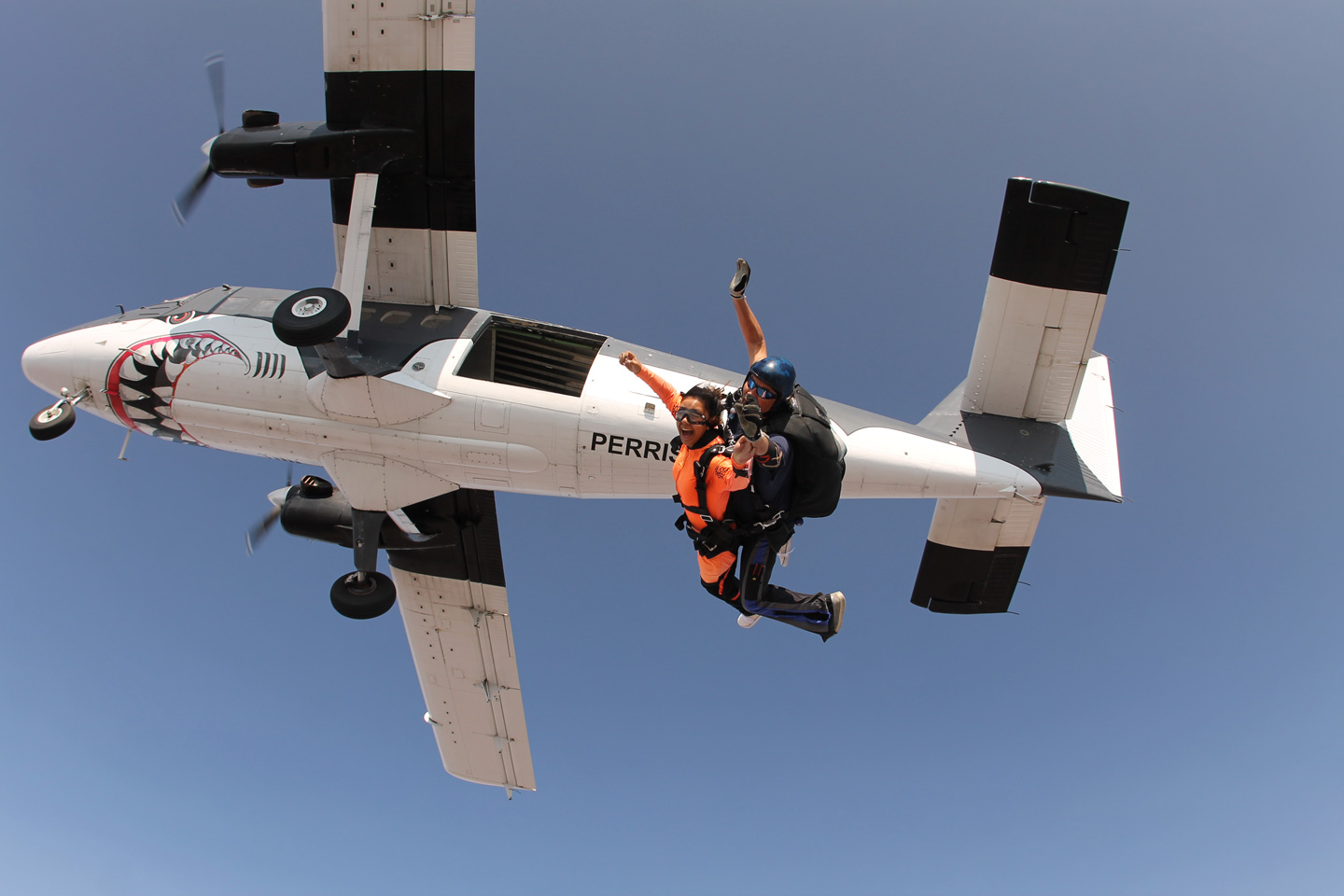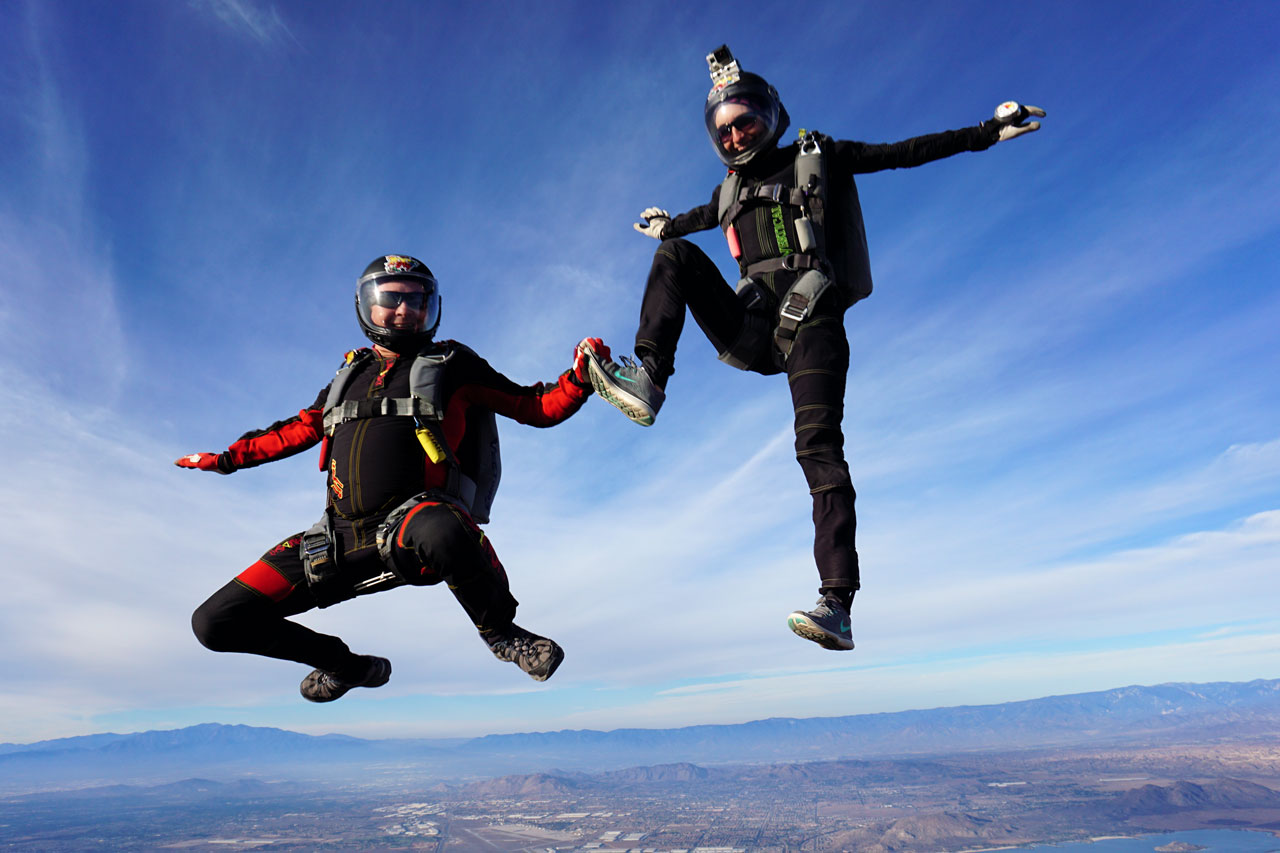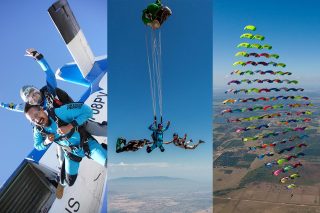Terminal Velocity in Skydiving Explained
Skydiving
Posted by: Skydive Perris
8 months ago
How Terminal Velocity in Skydiving Works
“Terminal Velocity.” The phrase alone evokes feelings of adrenaline and adventure. And when thinking about terminal velocity, skydiving is the quintessential activity that comes to mind. Skydiving is all about speed, falling, and the extreme.
But do you hit terminal velocity when skydiving, really? You absolutely do! And there’s more to those two little words than you might think.
Read on to learn all about terminal velocity, parachute jump speeds, and how each skydiver is unique!

What is Terminal Velocity?
The powers that be define terminal velocity as “the constant speed that a freely falling object eventually reaches when the resistance of the medium through which it is falling prevents further acceleration.”
Phew, that’s a lot of words to say that an object (or body) reaches terminal velocity when drag/air resistance prevents it from falling any faster. At that point, unless the force of drag or gravity changes, the falling object will remain at that consistent speed.
Now, an interesting note about terminal velocity that surprises most people is this: not all objects have the same terminal velocity. When people think of terminal velocity, they often picture the science experiment where a bowling ball and a feather fall at exactly the same speed. The important part of that scenario is that it is conducted inside a vacuum.
Because we live in the real world and not inside a vacuum-sealed tube, every object’s terminal velocity is subject to forces of air resistance and drag. That means that the unique properties of each object impact how fast it will fall. And nowhere is this more true than in the world of skydiving.

How Does Terminal Velocity Work in Skydiving?
“How fast do you fall when skydiving?” It’s one of the most common questions we hear. Well, when it comes to terminal velocity, human bodies are not all the same. In fact, every person has their own individual terminal velocity.
So, what is the terminal velocity of a human jumping out of a plane? Terminal velocity in skydiving depends on a variety of factors:
- Total exit weight
- Body size
- Clothing (or lack thereof)
Gravity (in relation to a person’s weight) and air resistance work together to result in a person’s unique terminal velocity. And, to complicate matters, a person’s terminal velocity can change from jump to jump depending on what they’re wearing.
To clear things up, let’s look at an example of terminal velocity skydiving.
Scenario 1: A skydiver jumps out of an airplane. They weigh 200 pounds and are wearing an extremely baggy jumpsuit. The jumpsuit will result in drag, slowing their freefall speed to around 118 mph.
Scenario 2: The same skydiver jumps out of an airplane again, this time wearing very tight leggings and a close-fitting top. On this jump, they fall much faster (upwards of 125 mph or more) because they don’t have as much clothing slowing them down.
A skydiver’s natural weight and the force of gravity on that weight remain constant, and result in their natural terminal velocity. But when you add the drag of clothing or the additional weight of added gear, their terminal velocity will increase or decrease accordingly.
Understanding how long it takes to get to terminal velocity in skydiving is also a big part of pre-jump planning. Skydivers don’t hit terminal velocity the instant they step out of the airplane door. It takes the human body, on average, 10 to 12 seconds to pick up enough speed to hit terminal velocity. If you pay close enough attention, you can even feel your freefall speed increase as you reach that terminal point!
Pro tip: Skydivers will often intentionally alter their terminal velocity when flying with groups of people so that it’s easier for everyone to fly together!

Does Terminal Velocity Change with Different Skydiving Positions?
Speaking of terminal velocity in skydiving, physics plays a huge role in understanding how to execute successful skydives.
In addition to different outfits and gear impacting terminal velocity, varying body positions can also alter the speed at which a skydiver falls. Positions that present less body surface area into the wind will allow the skydiver to fall faster than they would in positions that spread the body out flat.
For instance, a skydiver falling belly-to-earth in an arch position will fall slower than a skydiver falling in a standing or head-down position. And, to state the obvious, someone flying on their belly and wearing a wingsuit will fall the slowest of all.
These different positions and flying styles have actually resulted in a variety of skydiving disciplines that experienced jumpers train and even compete in. Learning to fly in different positions and use the full range of speeds available is one of the best parts of freefall!
Want to find out what your terminal velocity is? Let us get you in the air and show you what the freedom of speed feels like! Blue skies!
Related Article: How Fast Do You Fall When Skydiving
Categories:
You May Be Interested In:

Unique California Experience Gifts for the Holidays
1 month ago by Skydive Perris

Skydiving Patches You Can Collect at Skydive Perris
3 months ago by Skydive Perris

Famous People Who’ve Jumped at Skydive Perris
3 months ago by Skydive Perris

The Ultimate Family Hidden Gem in SoCal
6 months ago by Skydive Perris

